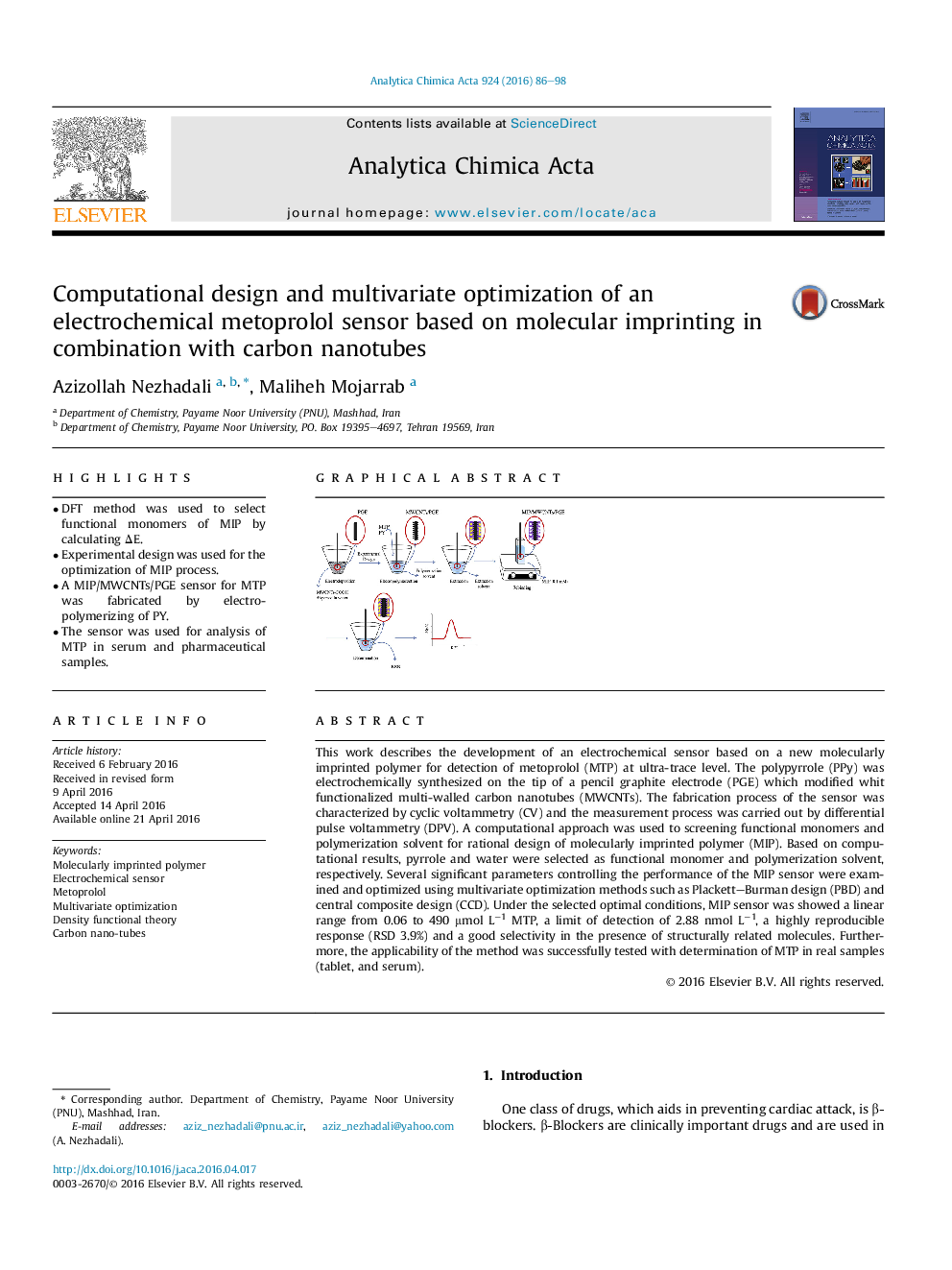| Article ID | Journal | Published Year | Pages | File Type |
|---|---|---|---|---|
| 1162868 | Analytica Chimica Acta | 2016 | 13 Pages |
•DFT method was used to select functional monomers of MIP by calculating ΔE.•Experimental design was used for the optimization of MIP process.•A MIP/MWCNTs/PGE sensor for MTP was fabricated by electropolymerizing of PY.•The sensor was used for analysis of MTP in serum and pharmaceutical samples.
This work describes the development of an electrochemical sensor based on a new molecularly imprinted polymer for detection of metoprolol (MTP) at ultra-trace level. The polypyrrole (PPy) was electrochemically synthesized on the tip of a pencil graphite electrode (PGE) which modified whit functionalized multi-walled carbon nanotubes (MWCNTs). The fabrication process of the sensor was characterized by cyclic voltammetry (CV) and the measurement process was carried out by differential pulse voltammetry (DPV). A computational approach was used to screening functional monomers and polymerization solvent for rational design of molecularly imprinted polymer (MIP). Based on computational results, pyrrole and water were selected as functional monomer and polymerization solvent, respectively. Several significant parameters controlling the performance of the MIP sensor were examined and optimized using multivariate optimization methods such as Plackett–Burman design (PBD) and central composite design (CCD). Under the selected optimal conditions, MIP sensor was showed a linear range from 0.06 to 490 μmol L−1 MTP, a limit of detection of 2.88 nmol L−1, a highly reproducible response (RSD 3.9%) and a good selectivity in the presence of structurally related molecules. Furthermore, the applicability of the method was successfully tested with determination of MTP in real samples (tablet, and serum).
Graphical abstractFigure optionsDownload full-size imageDownload as PowerPoint slide
